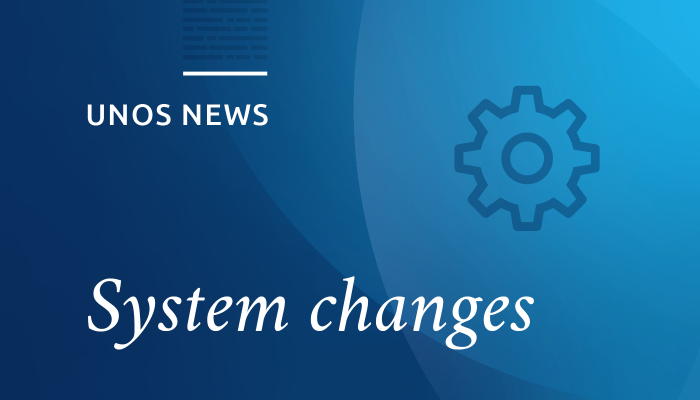Liver and intestine transplant program directors, surgeons, physicians, administrators, clinical coordinators, data coordinators and clinical support staff; OPO executive directors and procurement directors/managers; compliance and quality managers; member representatives
Implementation date: February 4, 2020
At-a-glance
On Tuesday, Feb. 4, the liver and intestine distribution systems based on acuity circles will begin operation. This will also include a conversion of each transplant hospital’s median MELD at transplant (MMaT) score to reflect transplants performed at hospitals within a radius of 250 miles.
A federal court ruling issued Jan. 16, 2020, removed the potential for an injunction that may delay implementation of this policy, approved by the OPTN Board of Directors in December 2018.
The acuity circle policy replaces donation service area (DSA) and regional boundaries currently used in liver and intestinal organ distribution with a system based on distance between donor hospital and transplant hospital. This policy notice addresses details of the policy. Simulation modeling suggests the policy should reduce pre-transplant deaths, increase pediatric transplantation and reduce geographic variation in medical urgency scores at the time of transplant.
The UNOS Secure EnterpriseSM system, which includes UNetSM and other transplant applications such as WaitlistSM, DonorNet®, TIEDI® and KPDSM, will be unavailable for approximately one hour the morning of Feb. 4 beginning at 7 a.m. Eastern standard time to allow for implementation.
A separate variance will be implemented Tuesday, Feb. 18, 2020, to address transplant access for medically urgent liver candidates listed at hospitals in Hawaii and Puerto Rico. This variance was approved in a teleconference of the OPTN Executive Committee on Jan. 16, 2020 and was supported in a recent special public comment period.
Implementation details
The sequence of offers is likely to change in many areas. The system will first prioritize livers from adult deceased donors for compatible Status 1A and 1B candidates listed at transplant hospitals within 500 nautical miles of the donor hospital. Following that, it will prioritize candidates of similar groupings of medical urgency within 150, 250 and 500 nautical miles from the donor hospital. The new system will also increase priority for pediatric candidates relative to adult candidates for liver offers from donors younger than age 18.
As of the time of policy implementation, candidates with an existing MELD exception score based on the MMaT of their DSA will have their scores converted to a MMaT based on transplants performed at hospitals within a radius of 250 miles. The new MMaT scores to be used for each transplant program are available here. (As reference, the MMaT values currently based on DSA are available here.) PELD exception scores based on the median PELD at transplant (MPaT) will not change, since the MPaT is calculated on a national basis.
Variances affected by the new policy
As noted above, a new variance will be implemented Tuesday, Feb. 18, 2020, addressing access for urgent liver transplant candidates in Hawaii and Puerto Rico.
Also, as approved by the OPTN board at its December 2019 meeting, an existing Region 8 split liver variance will convert at the time of policy implementation to align with the acuity circles distribution policy. Keep in mind that if your OPO places a liver with a transplant hospital that is participating in the variance, it will need to offer the second segment to candidates with a MELD or PELD of at least 33 within 500 nautical miles instead of candidates with a MELD or PELD of 35 or higher in the region.
A closed variance for allocation of livers recovered in Region 9 will also be dissolved at the time of implementation. The policy notice addresses this change.
Resources and education
- Various resources are available in the implementation toolkit. These include links to relevant policies and supporting information, as well as educational resources for transplant clinicians and transplant candidates.
- Access policy and system training in UNOS Connect from the course catalog; Liver category*
- LIV110: Liver and Intestine Allocation
- LIV111: Liver and Intestine Allocation Town Hall
- LIV110-D: More Than One Way to Split a Liver
- LIV107: NLRB Policy: MELD/PELD Exception Scoring
An additional offering is in development and will be available Feb. 4, 2020:
- LIV101-D: Access for Urgent Liver Candidates in Hawaii and Puerto Rico

